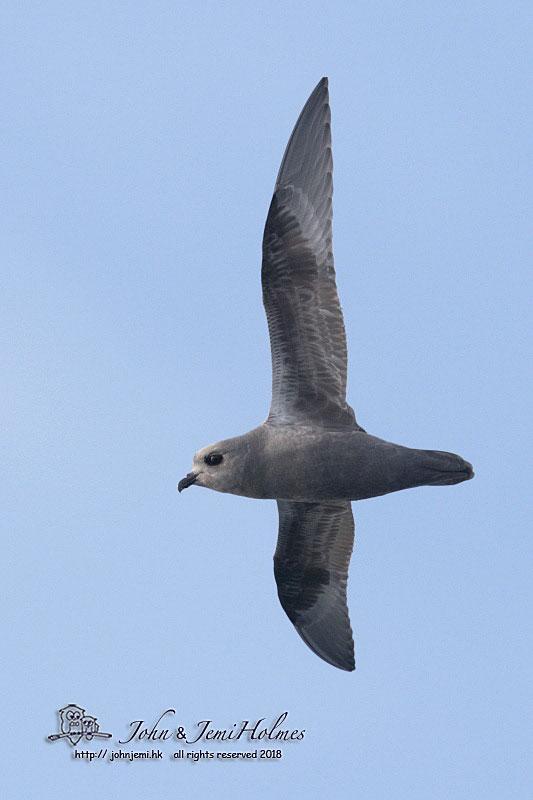
By John and Jemi Holmes
Etymology: Racer on the Sea Foam
First Described By: Olson, 2000
Classification: Dinosauromorpha, Dinosauriformes, Dracohors, Dinosauria, Saurischia, Eusaurischia, Theropoda, Neotheropoda, Averostra, Tetanurae, Orionides, Avetheropoda, Coelurosauria, Tyrannoraptora, Maniraptoromorpha, Maniraptoriformes, Maniraptora, Pennaraptora, Paraves, Eumaniraptora, Averaptora, Avialae, Euavialae, Avebrevicauda, Pygostaylia, Ornithothoraces, Euornithes, Ornithuromorpha, Ornithurae, Neornithes, Neognathae, Neoaves, Aequorlitornithes, Ardeae, Aequornithes, Austrodyptornithes, Procellariiformes, Procellariidae
Status: Extant, Least Concern
Time and Place: Within the last 10,000 years, in the Holocene of the Quaternary


The Kerguelen Petrel is found along the Antarctic Ocean

Physical Description: The Kerguelen Petrel looks like other petrels, with a narrow body and long, thin wings for soaring above the water. This petrel is about 33 to 36 centimeters long, with wings up to 82 centimeters in length. It is a fairly uniformly grey bird, with a light grey belly and darker grey wings and tail. It has a small black beak, and black patches around the eyes. The sexes tend to look the same, though the males are larger; the juveniles also look similar to the adults.
Diet: These petrels primarily feed on squid, but also krill, fish, and cephalopods.
Behavior: The Kerguelen Petrel spends most of its time flying fast over the sea looking for food, often following cetaceans – especially orcas – around to get food welled up from the ocean. They often capture food at night, surface-seizing as well as dipping and plunging to grab their favorite treats. They will go very fast over the waves, also flying high, before diving fast to grab their food. Despite this, they are a very quiet bird, only calling wheezy calls while flying above breeding colonies.

By John Gerrard Keulemans, in the Public Domain
The Kerguelen Petrel begin breeding in August, with a major movement occuring in September to reach the breeding sight, and egg laying mainly occurs in October. They make huge egg laying colonies on islands in the Antarctic Ocean, though each pair is monogamous and makes one nest burrow. They make these nest burrows deep in the soil and line them with plants, where they lay one white egg. That egg is incubated for up to fifty days, first by males and then by females. The chicks are very brown and brooded with food from both parents. These birds then spend most of their lives moving around the water, traveling thousands of miles over a short time to reach sources of food.
Ecosystem: The Kerguelen Petrel mainly lives in cold, pelagic waters; they breed near the sea, and spend very little of their time on land.
Other: Despite being poorly known, the Kerguelen Petrel is not globally threatened with extinction, with millions of mated pairs alive today.
~ By Meig Dickson
Sources
Carboneras, C., Jutglar, F. & Kirwan, G.M. (2019). Kerguelen Petrel (Aphrodroma brevirostris). In: del Hoyo, J., Elliott, A., Sargatal, J., Christie, D.A. & de Juana, E. (eds.). Handbook of the Birds of the World Alive. Lynx Edicions, Barcelona.
Jobling, J. A. 2010. The Helm Dictionary of Scientific Bird Names. Christopher Helm Publishing, A&C Black Publishers Ltd, London.
